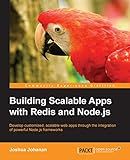Best Node.js Data Posting Solutions to Buy in December 2025

Node.js for Beginners: A comprehensive guide to building efficient, full-featured web applications with Node.js



Express in Action: Writing, building, and testing Node.js applications



Node.js in Practice



Automating with Node.js



Node.js Made Simple: Hands-On Exercises for Node.js Beginners



Building the Web of Things: With examples in Node.js and Raspberry Pi



Node.js Unleashed: Mastering Scalable JavaScript Applications



Modern Full-Stack Development: Using TypeScript, React, Node.js, Webpack, and Docker



Node.js Recipes: A Problem-Solution Approach (Expert's Voice in Web Development)



Building Scalable Apps with Redis and Node.js


To post data from Node.js to CodeIgniter, you can use the request module in Node.js to make an HTTP POST request to a CodeIgniter controller.
First, install the request module by running the following command in your Node.js project directory:
npm install request
Next, in your Node.js script, require the request module and use it to make a POST request to the CodeIgniter controller. You will need to specify the URL of the CodeIgniter controller, the data you want to send in the POST request, and any headers if necessary.
Here is an example of how you can post data from Node.js to CodeIgniter:
const request = require('request');
const postData = { key1: 'value1', key2: 'value2' };
const options = { url: 'http://example.com/codeigniter_controller/method', method: 'POST', json: postData };
request(options, (error, response, body) => { if (error) { console.error(error); } else { console.log(body); } });
In your CodeIgniter controller, you can retrieve the posted data using the input class. For example:
$key1 = $this->input->post('key1'); $key2 = $this->input->post('key2');
echo "Received data: $key1, $key2";
Make sure to properly handle any errors and validate the data sent from Node.js in your CodeIgniter controller to ensure data security and integrity.
How to handle authorization and authentication when posting data from Node.js to Codeigniter?
To handle authorization and authentication when posting data from Node.js to Codeigniter, you can follow these steps:
- Implement a method of authentication in your Codeigniter application, such as using JWT (JSON Web Tokens) or OAuth2. This will allow you to securely authenticate the user before allowing them to access your API.
- Generate a token on the Node.js side using a library like jsonwebtoken and pass this token in the headers when making a request to Codeigniter.
- On the Codeigniter side, verify the token and authenticate the user before processing the request. You can use a library like Firebase JWT to decode and verify the token.
- If the token is valid and the user is authenticated, process the request and return the data.
By following these steps, you can ensure that only authenticated users are able to access and post data to your Codeigniter application from Node.js. This will help to secure your API and protect your data from unauthorized access.
How to set up a secure connection between Node.js and Codeigniter for data posting?
To set up a secure connection between Node.js and Codeigniter for data posting, you can follow these steps:
- Enable HTTPS on your Node.js server by setting up an SSL certificate. You can generate a self-signed certificate for development purposes or purchase an SSL certificate from a Certificate Authority for production.
- Install the axios package in your Node.js project. Axios is a popular HTTP client for Node.js that supports making HTTPS requests.
- Update your Node.js code to make HTTPS requests to your Codeigniter API. Here's an example of how you can post data to your Codeigniter endpoint using axios:
const axios = require('axios');
const postData = { // Your data to be posted to Codeigniter };
axios.post('https://your-codeigniter-api-endpoint.com', postData) .then(response => { console.log('Data posted successfully:', response.data); }) .catch(error => { console.error('Error posting data:', error); });
- Configure your Codeigniter API to only accept HTTPS requests. You can do this by ensuring that your Codeigniter server is set up to handle HTTPS requests and enforcing HTTPS in your API routes.
By following these steps, you can set up a secure connection between Node.js and Codeigniter for data posting over HTTPS. This will help protect your data from being intercepted by malicious actors during transit.
What is the process for posting data from Node.js to Codeigniter?
To post data from Node.js to CodeIgniter, you can follow these steps:
- Set up a route in CodeIgniter for the data to be posted to. This can be done by creating a new controller method and defining a route for it in the routes.php file.
- In your Node.js application, use a library like axios or node-fetch to make a POST request to the CodeIgniter route you set up in step 1. Make sure to include the data you want to post in the request body.
- Handle the POST request in your CodeIgniter controller method by accessing the posted data using the $_POST array or the input class provided by CodeIgniter. You can then process the data as needed and respond with any necessary data or status codes.
- After processing the data in CodeIgniter, you can send a response back to your Node.js application with any relevant information.
By following these steps, you should be able to successfully post data from Node.js to CodeIgniter.
What is the recommended data format for posting from Node.js to Codeigniter?
The recommended data format for posting from Node.js to Codeigniter is JSON (JavaScript Object Notation). JSON is a lightweight data interchange format that is easy to read and write for both humans and machines. It is widely supported in both Node.js and Codeigniter, making it a good choice for transferring data between the two platforms.
How to build a secure data transfer mechanism between Node.js and Codeigniter?
To build a secure data transfer mechanism between Node.js and Codeigniter, you can follow these steps:
- Use HTTPS: Ensure that the communication between Node.js and Codeigniter is encrypted using HTTPS. Configure SSL/TLS certificates on both servers to establish a secure connection.
- Implement Authentication: Use authentication mechanisms such as JWT tokens or OAuth to verify the identity of the communicating parties. Generate and validate tokens to ensure only authenticated users can access the data transfer.
- Validate Input: Implement input validation on both the Node.js and Codeigniter sides to prevent injection attacks. Use libraries like Validator.js in Node.js and form validation in Codeigniter to sanitize user input.
- Implement CSRF Protection: Cross-Site Request Forgery (CSRF) attacks can be mitigated by implementing CSRF tokens in your Node.js and Codeigniter applications. Verify the tokens on each request to prevent unauthorized access.
- Use Secure APIs: Restrict access to critical APIs by implementing authentication and authorization mechanisms. Use API keys or access tokens to control access to sensitive information.
- Secure Database Connections: Ensure that database connections are secure by using encrypted connections and strong authentication methods. Configure database drivers to use SSL/TLS for secure communication.
- Regularly Update Dependencies: Keep the Node.js and Codeigniter dependencies up to date to patch vulnerabilities and ensure the latest security features are implemented.
By following these steps, you can build a secure data transfer mechanism between Node.js and Codeigniter, protecting your data from unauthorized access and ensuring the integrity and confidentiality of your information.
What is the impact of network latency on data transfer between Node.js and Codeigniter?
Network latency can have a significant impact on data transfer between Node.js and Codeigniter. Latency refers to the delay in transferring data between the client and server, and it can affect the performance and responsiveness of the application.
When there is high latency, it can result in slower data transfer speeds between Node.js and Codeigniter. This can cause delays in loading web pages, processing requests, and communicating between the client and server. As a result, users may experience longer wait times and a less smooth user experience.
To mitigate the impact of network latency on data transfer, developers can implement strategies such as caching data, optimizing network configurations, reducing the size of data packets, and utilizing content delivery networks (CDNs). Additionally, using asynchronous programming techniques in Node.js and Codeigniter can help improve performance by allowing the application to continue processing tasks while waiting for data to be transferred.
